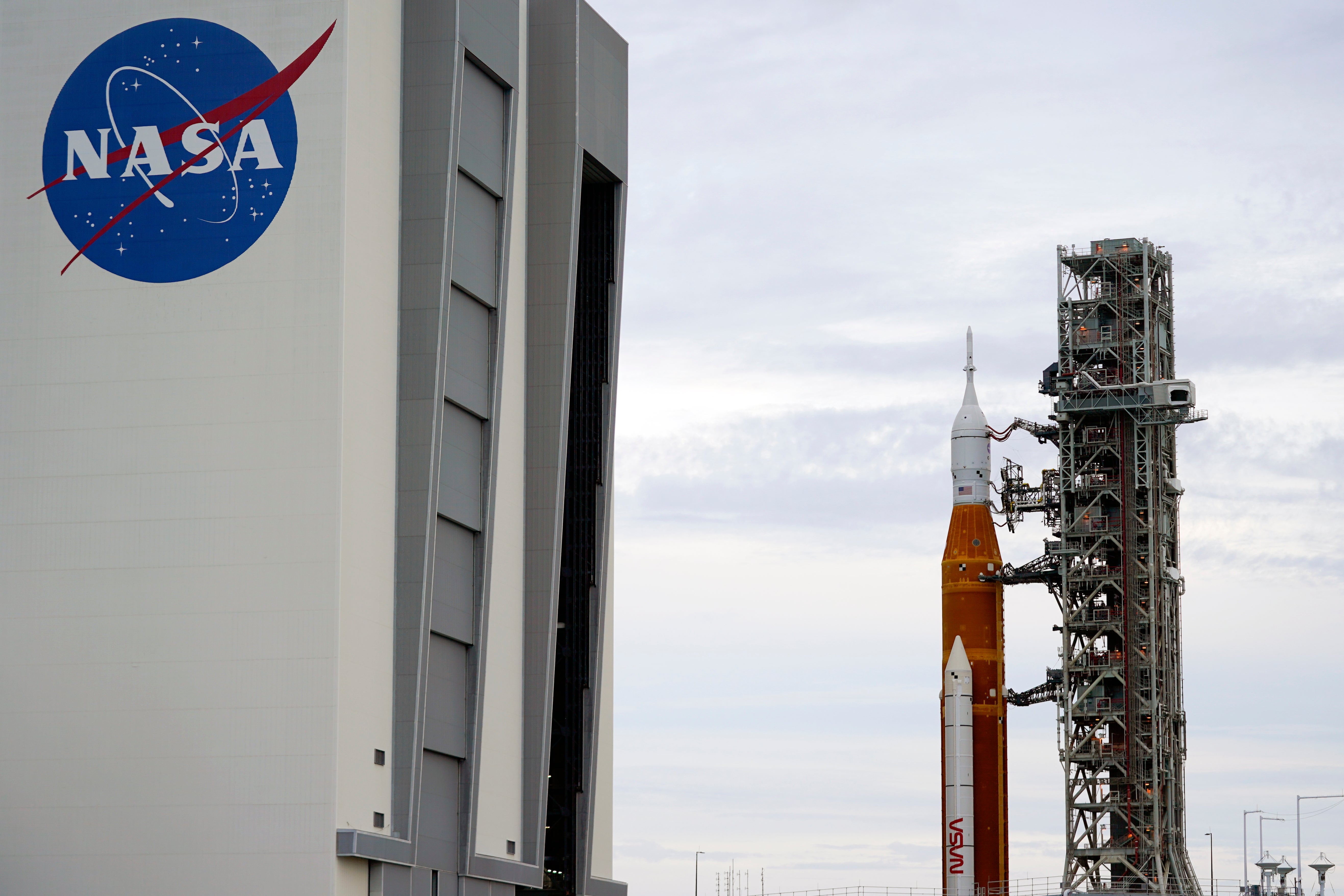What does Nasa stand for? What you should know about the space agency
The famous space agency is a household name around the world, but that name is also an acronym

Nasa is the US civilian space agency, an organization so tightly connected to the history of space exploration — from the Moon landings to the iconic space shuttle missions — that it’s easy to forget Nasa is an acronym.
Nasa stands for National Aeronautics and Space Administration, which succeeded the National Advisory Committee for Aeronautics (Naca) as the primary federal agency focused on the development of aerospace technologies. While Naca had developed aeronautics technologies for both civilian and military use, Nasa was founded with specific intent to serve as a civilian agency, pursuing the peaceful use of outer space, even as its rocket launches served as a strategic propaganda tool during the Cold War era.
While Nasa’s early history focused a great deal on human spaceflight, the mission of the space agency in the 21st century encompasses both human spaceflight and science mission, the International Space Station and the Artemis Moon program, robotic rovers on Mars and the James Webb Space Telescope in deep space.
The beginnings of Nasa
Nasa was founded in 1958, and, while it took over some of the responsibilities of Naca, it was born out of two important political realities of the times, according to Mike Neufeld, a senior curator in the space history department of the US National and Space Museum.
“Nasa came out of Sputnik,” he told The Independent in an interview. “The Soviets launch of Sputnik in the fall of 1957 and the sense that America was behind and the need to be more competitive.”
That was one driver of Nasa’s beginnings, but also important was the behind-the-scenes rivalry between the US military services.
“Too many newspapers and then now have it that NASA was created to create the space program. There already was a space program, several military space programs,” Dr Neufeld said. “Whatever we did in space in 1957, ’58, was done by the Army, Navy or Air Force. There was no civilian space agency.”
Before Nasa, there were turf struggles over which branch would end up leading America’s space flight efforts. President Dwight Eisenhower, meanwhile, wasn’t sure the military was the right institution to front America’s efforts in space, according to Nasa historian Brian Odom.
“Eisenhower is somebody who really understands the nature of the military,” Dr Odom told The Independent in an interview. Eisenhower valued “keeping the military separate from people, research and development.”
So Nasa was stood up as a civilian space and a human spaceflight agency with the Mercury program, Dr Neufeld said, despite Mr Eisenhower’s own misgivings about the entire project.
“He was very skeptical that we needed to send any astronauts into space. He thought it was a stunt and basically didn’t really care for the whole idea,” Dr Neufeld said. “But he was pressed by the space race and by demands of the public and military to have a manned space program, as that was called then.”
Expanding human spaceflight
Nasa’s Mercury program was ultimately a success. It led to the first American flight into space, Alan Shepard on 5 May 1961, and the first American to orbit the Earth, John Glenn in 1962. But the US was still behind the Soviets, whose cosmonaut Yuri Gargarin had beat American astronauts to space and orbit with his 12 April 1961 orbital flight.
The sea change was when US President John F. Kennedy announced that Nasa would send astronauts to the Moon in what would become the Apollo program. From there, the space agency grew significantly, both in its focus on human spaceflight and in its funding.
“When Kennedy decided that we should go to the land humans on the moon to beat the Soviets, that greatly expanded the mission of NASA,” Dr Neufeld told The Independent. “Nasa’s budget quintupled between 1960 and the mid-60s; it went from a $1 billion agency to a $5 billion agency because of the race to the Moon.”
Even after Nasa faced budget cuts in the 1970s, with President Richard Nixon canceling the Apollo program after the 1972 Apollo mission, the space agency would continue pioneering human spaceflight. The space shuttle program and the International Space Station refocused that spaceflight to Earth orbit, but astronauts kept flying.
Nasa as a scientific agency
Notably, Nasa wasn’t only a human spaceflight agency.
“The other side is scientific discovery,” Dr Odom told The Independent. “Balancing human spaceflight with scientific discovery.”
Astronomer Nancy Grace Roman joined Nasa in 1959 to become Nasa’s first chief of astronomy, he noted, building the space agency’s astronomy program from scratch and bringing scientists into the Nasa fold as well as pilots and engineers.
Roman, who passed away in 2018, was instrumental in developing the Hubble Space Telescope, and is sometimes known as the “Mother of Hubble.” The James Webb Space Telescope, which will soon celebrate the one-year anniversary of its launch on 25 December 2021, is part of that scientific legacy at Nasa.
It would be a mistake to think that Nasa, as it exists today, is an organization with purely spaceflight and scientific programs. Instead, exploration, scientific investigation and human adventure exist hand in hand, according to Dr Odom. This can be seen in Nasa’s Mars program, which involves robotic missions today, but could see human missions sometime in the 2040s.
“Think about the Curiosity and Perseverance rovers on Mars today,” he said. “Which bucket do they fall into? That’s not human spaceflight, but it is building a platform on which human space exploration will build one day.”
Subscribe to Independent Premium to bookmark this article
Want to bookmark your favourite articles and stories to read or reference later? Start your Independent Premium subscription today.

Join our commenting forum
Join thought-provoking conversations, follow other Independent readers and see their replies